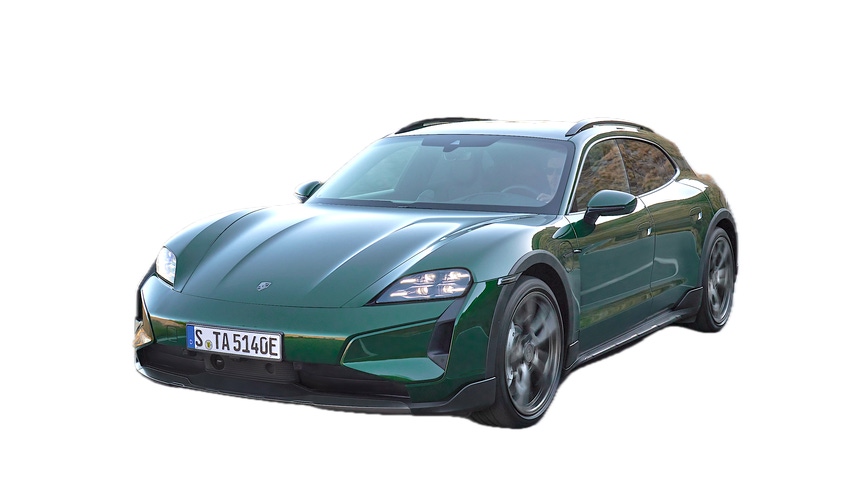Amsted’s 2-Speed EV Transmission Boosts Range 10 Percent
Only the Porsche Taycan has used a 2-speed transmission so far, but Amsted’s efficient clutch designs might change that.

At a Glance
- Fast 17-ms shifts
- Smooth power transfer
- Only uses power while shifting
Amsted Automotive has applied its longtime expertise in electro-mechanical torque management to develop clutch systems for EVs that can boost efficiency and range by as much as 10 percent.
This is because Amsted’s Dynamic Controllable Clutch technology can be used to include a two-speed transmission in an EV’s drivetrain, which provides both improved performance and increased driving range.
The challenges of shifting gears with a high-torque electric motor have meant that only the Porsche Taycan has used a 2-speed transmission so far. It was the plan of Tesla founders Martin Eberhard and Marc Tarpenning to include a 2-speed transmission in the company’s original Roadster model, but they couldn’t achieve the necessary reliability then and Tesla has shied away from multi-speed transmissions ever since.
Amsted’s clutch system can be used with a one-way clutch (OWC) to direct power flow between two different transmission gearsets, or it can be used to disconnect motors from the vehicle’s wheels to reduce drag for improved range of all-wheel-drive models.
Another advantage of these clutches is that they only use power when changing state, so they are more efficient than clutches that need continuous power. The 12-volt mechatronic system doesn’t require costly 48-volt power, but it does provide lightning-fast 17-millisecond shifts.
“Our latest technologies are associated with the evolution of our controllable mechanical diode [CMD] and DCC [Dynamic Controllable Clutch] clutching systems,” explained Jeff Prout, Amsted vice president of product engineering in a video posted to the company’s YouTube channel. “These technologies have evolved now for the electrified vehicle space, and they are being used not only as shifting elements in multi-speed transmissions but also used for disconnects for disconnecting unused electric motors from the drivetrain for efficiency reasons.”
The benefits of the CMD one-way clutch, according to Prout, include the reduction of spin loss for improved efficiency, reduced packaging space, reduced mass, lower cost, and the ability to use aluminum torque-transfer components. The DCC provides similar benefits in a dynamically controlled design.
An Amsted white paper lists some of the challenges of using traditional clutches to achieve the same benefits provided by Amsted’s clutch technologies. The two primary alternatives are dog clutches and wet clutch packs, which each have their own shortcomings.
The white paper explains: “Dog clutches, or other typical mechanical locking devices, often require a significant amount of actuation and holding energy, can be hard to use, are often slow to engage, and lack smoothness – this “clunky” engagement can be disruptive to the driver.
Wet clutch packs, on the other hand, are easy to use and perform well, but they are remarkably inefficient and heavy.”
Additionally, their reliance on hydraulics in EVs that benefit from the elimination of hydraulic systems is a further complication.
Amsted’s motor-disconnect system relies on a DCC clutch that separates unused electric motors from the wheels, reducing friction losses for improved efficiency.
To provide 2-speed transmission capability, Amsted uses a CMD one-way clutch on first gear that is the primary drive and a DCC clutch for the other gearset that stays disengaged while the car is in first gear. When it shifts to second gear, the DCC engages the new ratio and the transmission’s output shaft begins to spin faster, driving through the disengaged first gear like when a bicycle rider coasts down a hill and stops pedaling.
Unlike your bicycle, the CMD clutch also has the ability to not freewheel in a one-way connection all the time, so the clutch can engage to provide regenerative braking and to send power to the wheels when the motor spins backward to provide the Reverse function.
With Amsted’s ability to boost EV driving range with a compact and efficient clutch system for 2-speed transmissions, it seems like the Porsche Taycan may eventually not be the outlier using such a transmission, but rather a pioneer leading a new trend.
About the Author(s)
You May Also Like





